During the hottest part of the cooling season, having an air conditioning system at home is an absolute life-saver.
For residents of blistering-hot states like Texas, Florida, and Louisiana, the thought of being forced to endure just a few days in the sweltering summer months is enough to strike dread into the hearts of even the hardiest individuals.
Yet every year, this is precisely what happens to thousands of people who neglect to give their cooling system the care and attention that it deserves.
Being proactive and following a simple home air conditioner maintenance routine is the key to preventing breakdowns and ensuring that your system will be ready to save you when temperatures skyrocket.
If you are unsure about where to start when it comes to maintaining your air conditioning system, check out the following easy-to-follow steps.
Table of Contents
Safety First: Turn off the Power
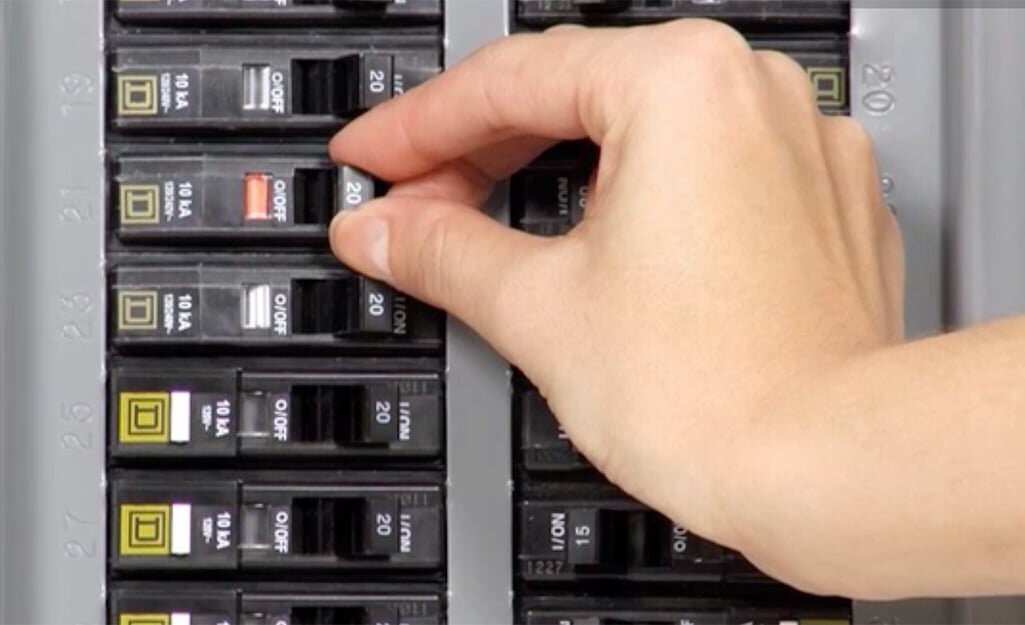
To ensure your air conditioner is safe to clean, make sure power has been turned off at the main switch or just flip the circuit breaker at the main electrical panel.
If you’re uncomfortable with this or unsure if you have really turned off your power, call your local HVAC contractor. They will be more than happy to help.
Remove Debris
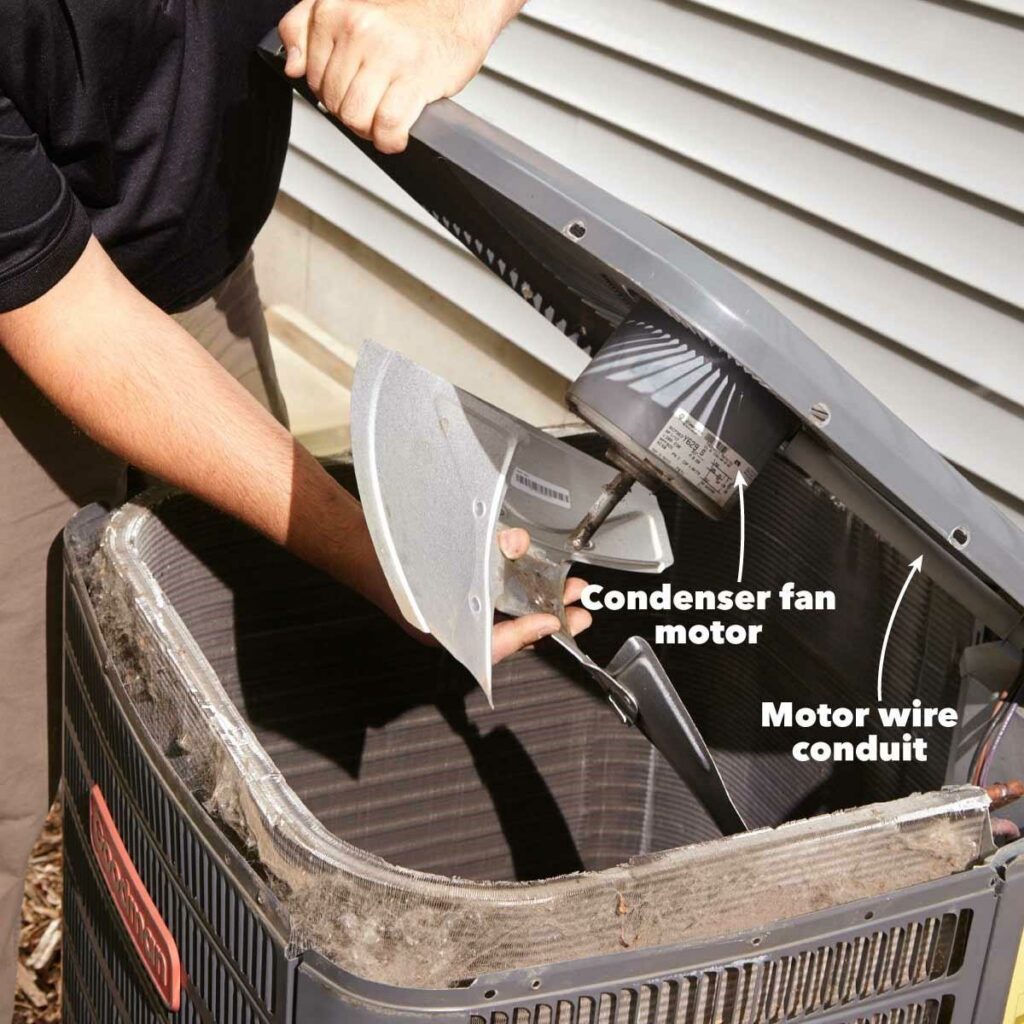
One of the most common issues that prevent an air conditioning unit from working correctly is when foreign objects manage to get into the system.
The second simple step to fixing air conditioners should always be to remove the screws from the outdoor unit which fasten the fan cage to the ac unit to check if there are any leaves or other debris inside, which could be impeding the flow of air.
Once you have removed any offending objects, it is a good idea also to make sure that nothing is lodged between any of the fins, straightening any bent ones as you go to facilitate maximum airflow to the condenser coils.
Ensure the Outside Area Is Clear
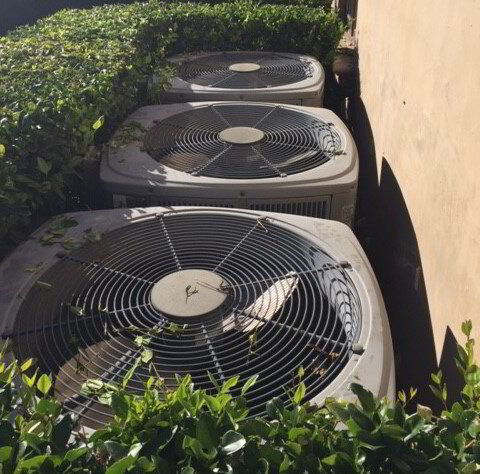
When you have removed debris and cleaned the cage, take some time to ensure that new debris will not immediately get back into the unit.
Cut back any encroaching bushes and branches at least 2ft (0.6 meters) that may be obstructing airflow and sweep or rake away any twigs or leaves that the fan could suck in.
Ensure to cover air conditioners during the winter months to stop dust and leaves from getting inside the system.
Also, be aware that small rodents and other critters have been known to identify air conditioning units as an excellent place to hunker down against the cold for the winter.
While we all like to see the wildlife in our gardens thrive, both the health of the animals and your machine will be in danger should you mistakenly turn the air conditioning on with them still inside!
Clean the Condenser Coil
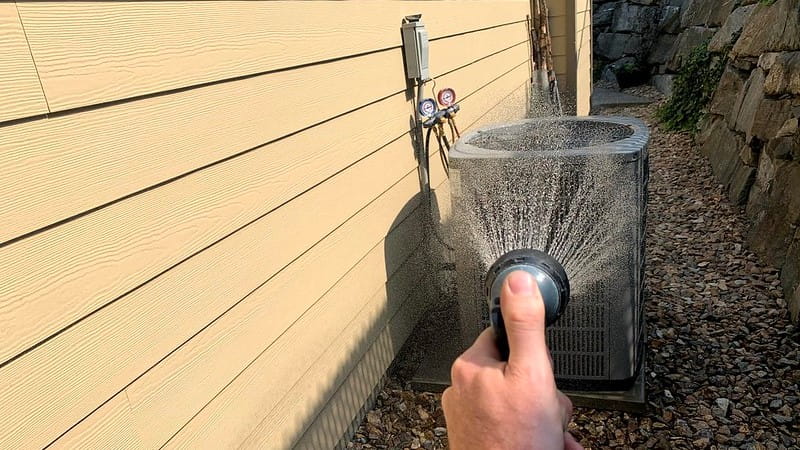
Outdoor condenser coils can get very dirty if the outdoor environment is dusty or has foliage nearby. You’ll be able to see the coil easily and notice any dirt that accumulates on its fins.
Using a garden hose at low pressure, wash all the dirt and debris from around the condenser unit. Be sure not to use high pressure too close to the fins as you may bend them.
Level the AC Unit
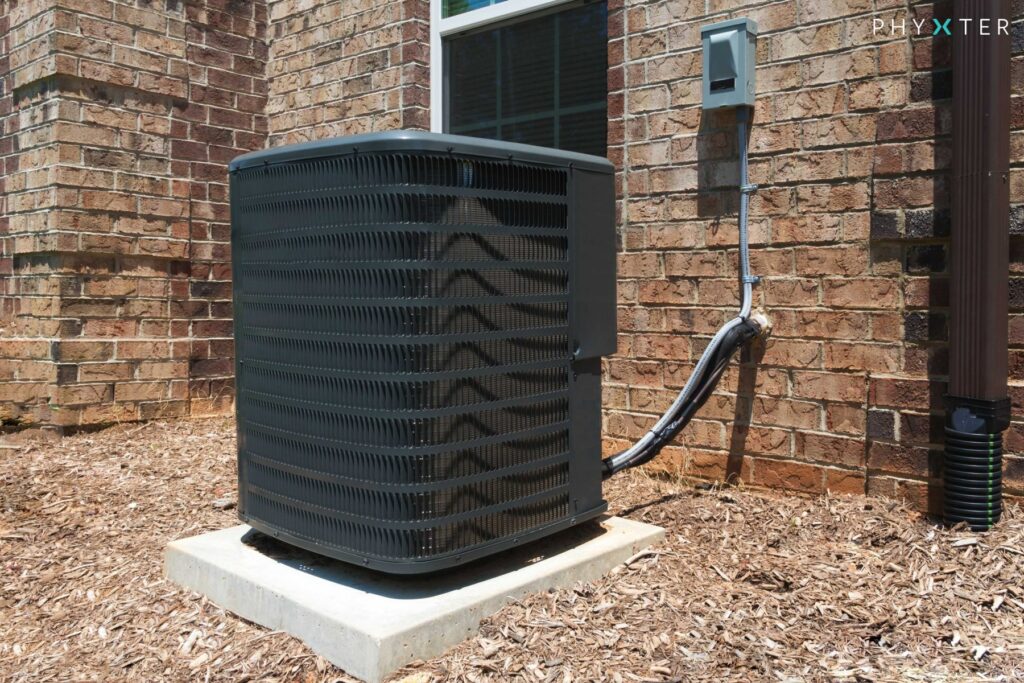
Over time the gentle movement of an air conditioner when it is turned on can cause it to move or sink slightly to a point where it is no longer level.
While this may not seem like a serious issue, an off-kilter AC unit has been shown to reduce the lifespan of the system.
This is because, as the compressor pumps, it causes vibrations, and if the system isn’t level, it could put added stress on the piping joints.
This added stress could cause premature refrigerant leaks. Use a level and some weather-resistant shims to bring the unit up to a perfect level.
Clean the Evaporator Coil and Drain
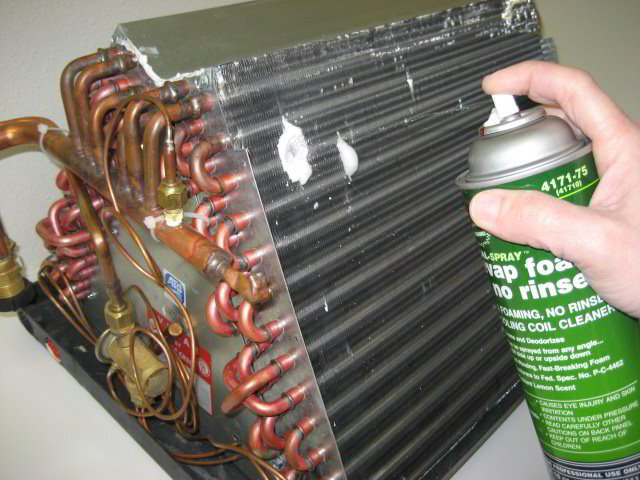
Once you have rectified any issues relating to the first three steps, it is time to open up the air conditioner from inside to check if everything is in order.
Remove the front panel and locate the evaporator coil (usually made of copper piping).
Use a soft brush to clean away any dust that may have accumulated on and around the evaporator coil before liberally spraying on some AC coil cleaner, which you can pick up at any good hardware store.
Clean coils can cool down much more efficiently and will help reduce the load on your compressor.
After you have given the coil a thorough clean, pour a mixture of equal-part water and household bleach down the evaporator drain to make sure there are no obstructions.
If you notice that the solution is not flowing through the pipe smoothly, check to see if there is any debris that has come to be lodged inside and remove it.
Change the Filter
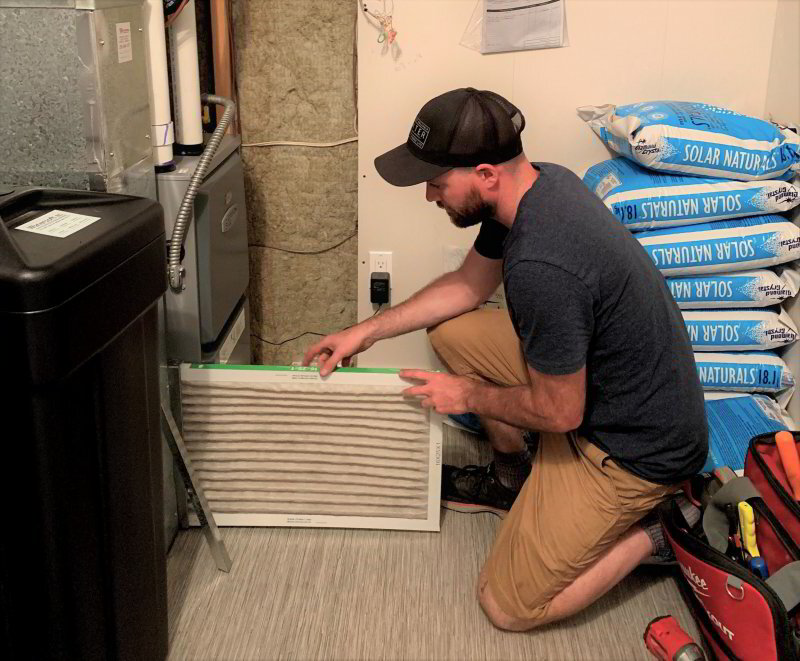
Changing the air filter in your HVAC system is something that should be done at least every three months and, in certain cases, every month.
Locate and open the hatch to the cavity in which the old filter is housed. Remove the old filter and insert the new one.
Check to see if your new filter has the correct airflow rating for your system before installing it.
If you replace your old filter with one which allows less air to flow through, it may put too much stress on your compressor, causing it to overwork and increasing the chance that it will break down.
Note: When installing new air filters, make sure that the arrows indicating the airflow direction correspond with the direction of the arrows on the inside of your unit.
DON’T FORGET TO TURN THE POWER BACK ON! Turn the power back and check the AC is working correctly and blowing cool air. If you are still having problems, you will have to precede to the next step…
Call Out an HVAC Contractor
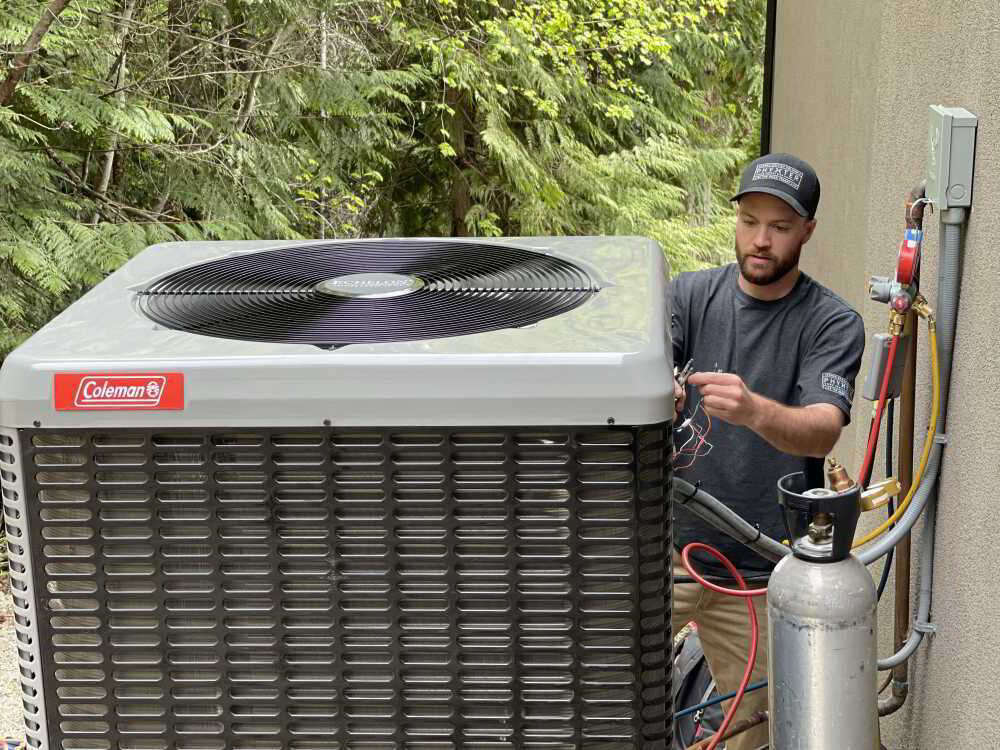
In the event of a breakdown from which you cannot get your air conditioning to work by following the steps detailed above, your system is likely to need some attention from an HVAC contractor.
HVAC contractors are trained professionals who specialize in installing and repairing commercial and domestic air conditioning systems.
You also need the right tools most homeowners are unlikely to own.
When it comes to ensuring that your air conditioning unit is good to go, there is one word that takes precedence over all others, and that word is “maintenance.”
While many people wait for their system to tell them that it has developed an issue, a proactive approach to maintenance will protect you from breakdowns and help you to avoid being forced to fork out on considerable repair costs.
By following a few simple steps like those laid out in this guide on air conditioner maintenance, you can rest easy that your air conditioner will be ready to cool you down through the roasting summer months.
Dealing with other common AC problems? Check out: Top 18 Common AC Problems and Solutions.
Finally!
Air conditioning and general HVAC maintenance is very important in maintaining a comfortable home and not something you should put off to a later date.
While it might not seem necessary sometimes, good preventative maintenance is better than forking out cash on a last minute repair on a hot day.
Connecting with your local HVAC company for regularly scheduled services is key. If you live in the North Okanagan region, then give Phyxter Home Services a call. We are only a phone call away.

![[2022] Easy-to-Follow DIY AC Maintenance Guide | Phyxter Home Services](https://phyxter.ai/wp-content/uploads/2022/08/2022-Easy-to-Follow-DIY-AC-Maintenance-Guide-Phyxter-Home-Services-1024x683.jpg)